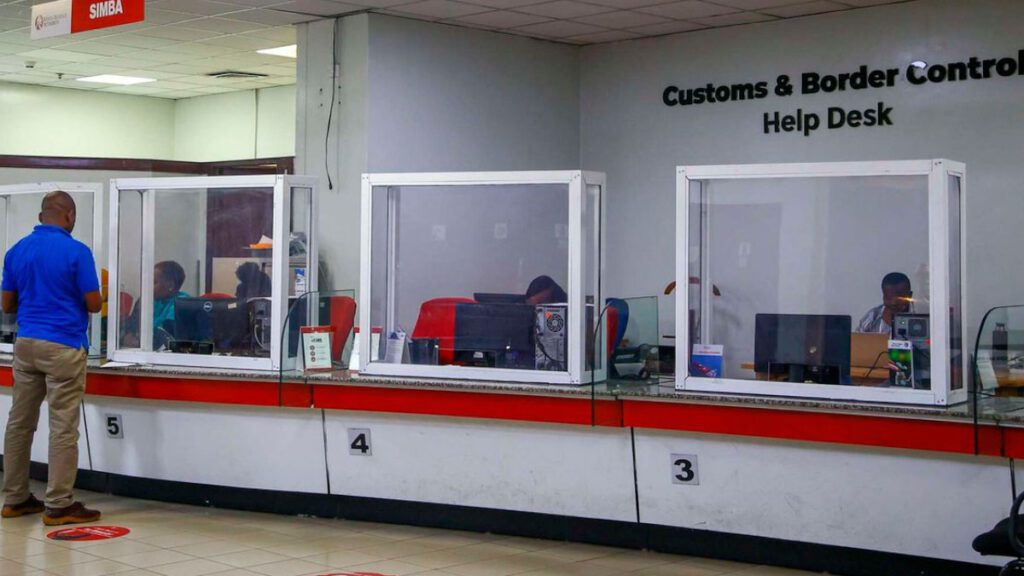Kenya Revenue Authority’s (KRA) Customs and Border Control (C&BC) Department has recorded an exceptional revenue performance in the 2024/2025 financial year, collecting KSh 879.329 billion — an 11.1% growth from the previous year. The milestone reflects a significant acceleration from the 4.9% growth rate posted in FY 2023/24, resulting in a performance rate of 105.9% against the annual target.
This robust performance translates to an average daily collection of KSh 3.546 billion, underscoring the department’s effectiveness in enhancing compliance, sealing revenue leakages, and leveraging technological and enforcement strategies.
Oil and Non-Oil Revenues Drive Growth
The growth in customs revenue was largely fueled by strong performance in both oil and non-oil tax streams. Non-oil revenues rose by 10.3%, totaling KSh 541.053 billion, while oil-related taxes surged by 12.5% to reach KSh 338.276 billion.
The third quarter of the fiscal year proved particularly fruitful, with the department achieving a historic high monthly collection of KSh 82.554 billion in January 2025, reflecting a remarkable 121.1% performance rate.
Among the tax categories, Import Duty recorded a robust 18.3% growth to KSh 157.870 billion, bolstered by increased imports in the agriculture and steel sectors, which registered growth rates of 67% and 39%, respectively. Excise Duty also posted a solid 11.6% growth, collecting KSh 125.3 billion.
Levy Collections and Rate Adjustments
In addition, other revenue channels also performed strongly. The Railway Development Levy (RDL) grew by 15% to KSh 36.820 billion, while the Road Maintenance Levy (RML) soared by 50.9% to KSh 119.662 billion. The sharp rise in RML is directly attributed to the increase in the levy rate from KSh 18 per litre to KSh 25 per litre during the financial year.
The overall increase in oil import volumes also contributed to revenue growth, with a 13% rise in imports of fuel products such as petrol (10.7%), diesel (13.8%), and other oil products including lubricants and coal (13.7%).
Notably, there was a 37.4% reduction in exemptions on key imports like sugar, rice, and cooking oil — a policy move that significantly enhanced collections under non-oil revenue streams.
Enhanced Enforcement and Seizures
KRA attributes the strong revenue performance to stringent customs enforcement and surveillance measures. As of June 2025, enforcement operations had led to the interception of illicit goods worth KSh 549 million, including a major bust involving over 40,000 litres of smuggled ethanol concealed within molasses imports.
The use of advanced data analytics, risk-based profiling of importers, and upgraded cargo scanning technologies were instrumental in identifying and stopping contraband goods before they could enter the Kenyan market.
Regional Revenue Growth and Efficiency Gains
The agency reported extraordinary growth in regional customs offices, with revenue collected in the Western and Rift Valley regions more than doubling — registering 122% and 117% growth, respectively. Similarly, port-based revenue increased by 15%, while bonded warehouse facilities grew by 17%.
Revenue per motor vehicle import also increased slightly by 0.8%, attributed to enhanced enforcement and digitization of motor vehicle valuation and clearance processes.
Further, the rollout of centralized clearance systems reduced average cargo clearance times from 110 hours to just 42 hours, a 62% improvement. This has been pivotal in increasing trade throughput, reducing demurrage costs, and facilitating smoother cross-border trade.
New Trade Facilitation Centers in Turkana County
As part of its Northern Corridor strategy, KRA has established three new trade facilitation centers in Kainuk, Lodwar, and Kakuma, targeting enhanced cargo monitoring and customs services along the transit routes to South Sudan, Ethiopia, and Uganda. The centers are expected to boost compliance while ensuring smoother movement of goods across Kenya’s borders.
Conclusion
KRA’s Customs and Border Control Department has posted one of its strongest performances in recent years, thanks to aggressive enforcement, technological innovation, and policy adjustments. The department’s ability to exceed its revenue targets in a challenging economic environment underscores the critical role of customs in national revenue mobilization and trade facilitation.
With continued investments in data-driven compliance and border modernization, KRA is well-positioned to sustain and potentially exceed its future targets.


